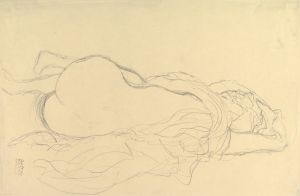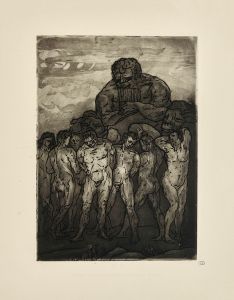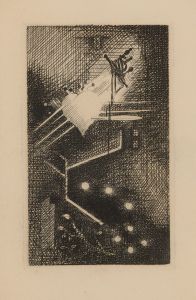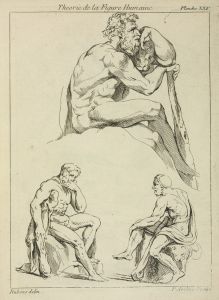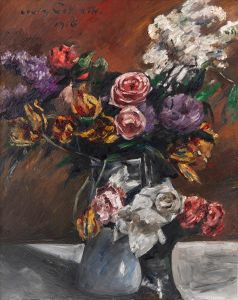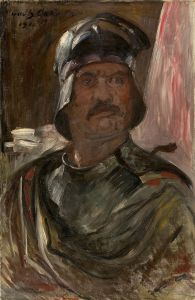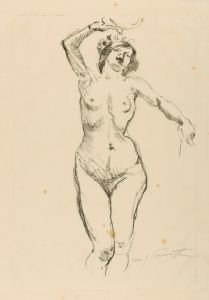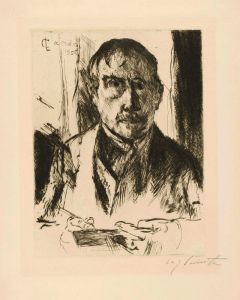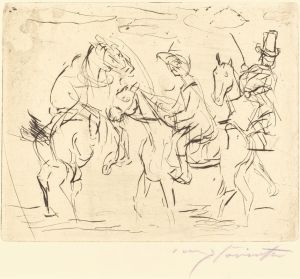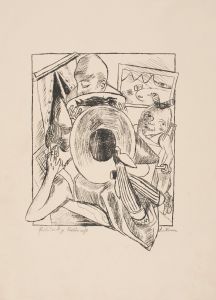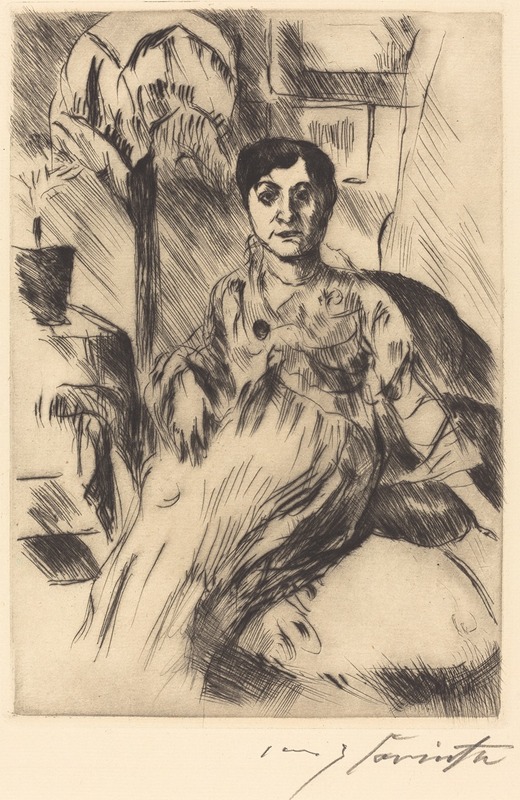
Interior with Woman
A hand-painted replica of Lovis Corinth’s masterpiece Interior with Woman, meticulously crafted by professional artists to capture the true essence of the original. Each piece is created with museum-quality canvas and rare mineral pigments, carefully painted by experienced artists with delicate brushstrokes and rich, layered colors to perfectly recreate the texture of the original artwork. Unlike machine-printed reproductions, this hand-painted version brings the painting to life, infused with the artist’s emotions and skill in every stroke. Whether for personal collection or home decoration, it instantly elevates the artistic atmosphere of any space.
Lovis Corinth, a prominent German painter, created "Interior with Woman" in 1901. Corinth was a leading figure in the transition from Impressionism to Expressionism, and his works often reflect a blend of these styles. Born in 1858 in Tapiau, East Prussia, Corinth studied in Königsberg, Munich, and Paris, where he was influenced by the Impressionists and the academic style of painting. His career spanned several decades, during which he produced a diverse body of work, including portraits, landscapes, and historical scenes.
"Interior with Woman" is a notable example of Corinth's exploration of domestic spaces and the human figure. The painting depicts a woman in an interior setting, capturing a moment of quiet introspection. Corinth's use of color and brushwork in this piece reflects his mature style, characterized by loose, expressive strokes and a vibrant palette. The composition is intimate, drawing the viewer into the private world of the subject.
The painting is part of Corinth's broader body of work that often features women in various settings, highlighting his interest in the human form and the complexities of human emotion. In "Interior with Woman," Corinth employs a rich interplay of light and shadow, creating depth and a sense of immediacy. The woman's pose and expression suggest contemplation, inviting viewers to ponder her thoughts and emotions.
Corinth's work during this period was marked by a shift towards more expressive techniques, influenced by his personal experiences and the changing artistic landscape of the early 20th century. In 1901, the same year he painted "Interior with Woman," Corinth moved to Berlin, where he became a central figure in the Berlin Secession, an art movement that sought to challenge the conservative art establishment in Germany.
Throughout his career, Corinth's art evolved in response to both personal challenges and broader cultural shifts. A stroke in 1911 left him partially paralyzed, but he continued to paint, adapting his style to accommodate his physical limitations. This later work is often more abstract and emotionally charged, reflecting his resilience and adaptability as an artist.
"Interior with Woman" exemplifies Corinth's ability to capture the subtleties of human experience through his art. The painting remains an important part of his oeuvre, illustrating his skill in rendering both the physical and emotional aspects of his subjects. Corinth's legacy as a painter is marked by his contributions to the development of modern art in Germany, bridging the gap between traditional and avant-garde movements.
Today, Lovis Corinth is celebrated for his dynamic approach to painting and his ability to convey the complexities of the human condition. His works are held in major collections around the world, and "Interior with Woman" continues to be appreciated for its artistic merit and insight into the early 20th-century domestic life.





